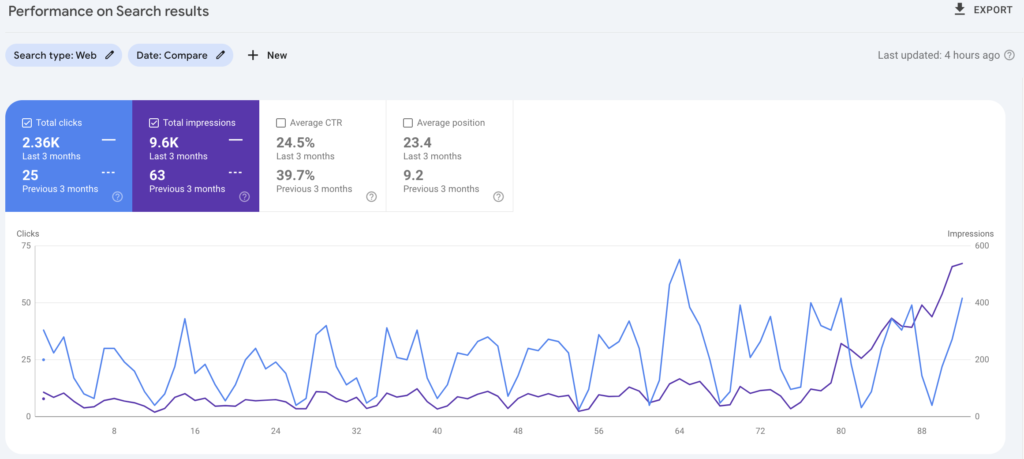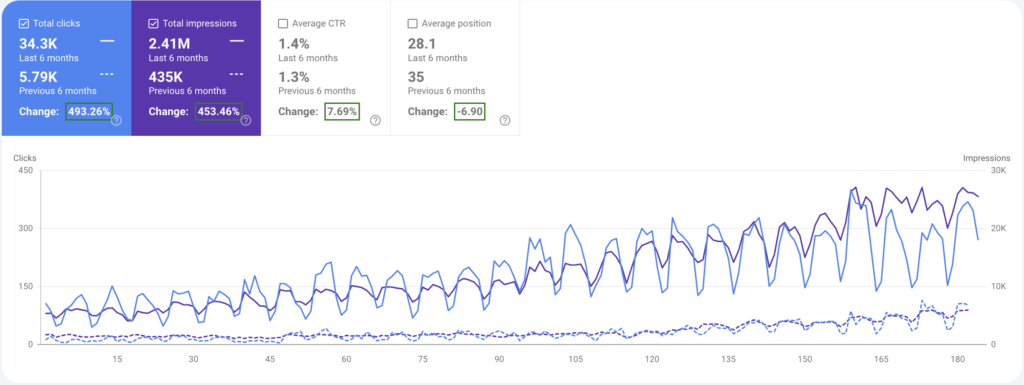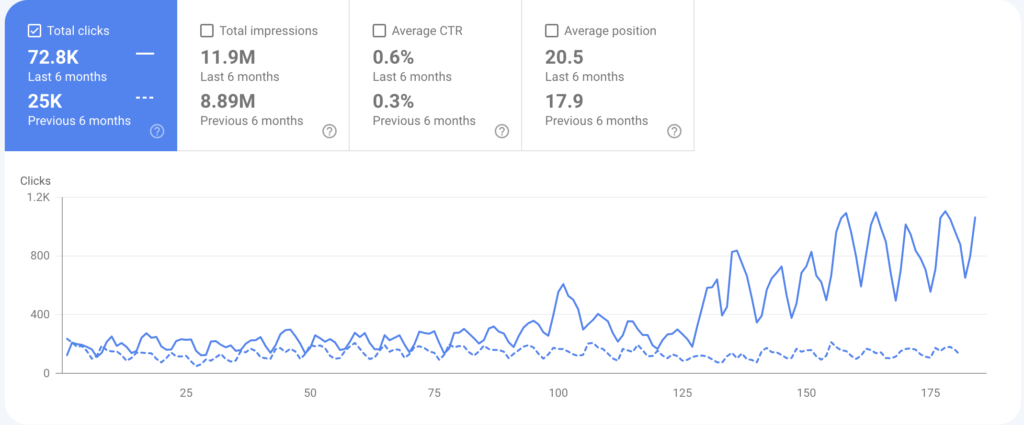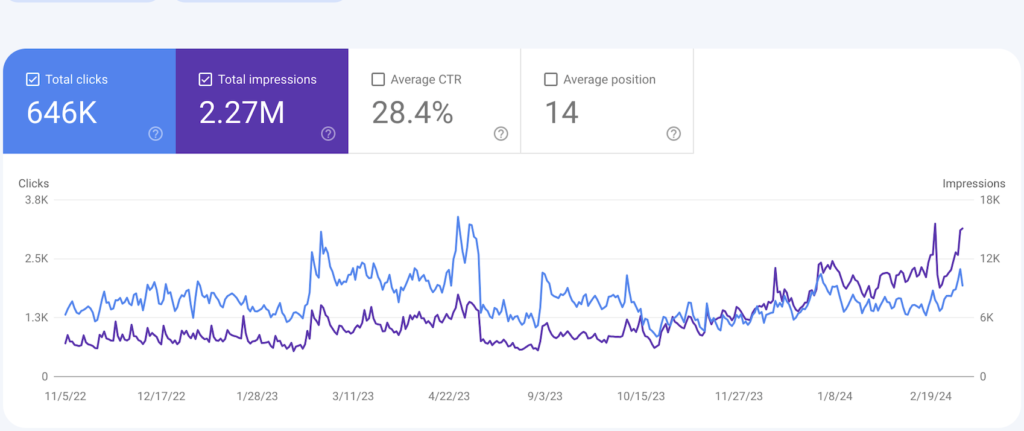Let’s talk about something frustrating: working hard on your website and getting no results. There is no traffic. Not a single lead. Nothing. Almost as if you are shouting into space. Sound familiar?
Without the right search engine optimization strategy, you’re practically invisible online. And that’s why so many businesses struggle to grow. Outdated practices, poor tools, and no real plan won’t get you anywhere. The worst part? It can feel impossible to fix on your own.
That’s where SEO tools come in. These tools make SEO way easier. They help you find the right keywords, fix your site issues, track your rankings, and even manage backlinks. It’s not as easy as it seems to choose and use the right tools correctly.
That’s why we created ThriveCraft SEO. No, we don’t just throw a few tools at you and hope for the best. We dig deep into what your business needs. Then, we build a clear, custom SEO strategy to boost your rankings and bring in leads that actually matter. With strong content, organic link-building, and up-to-date SEO methods, we make sure you rank and generate leads.
Perhaps you’re ready to take things up a notch? We offer long-term solutions at ThriveCraft SEO.
Book a Free SEO Audit today!
Benefits of Using SEO SaaS Tools
SEO SaaS tools are a big help for marketers. They make SEO easier and campaigns more effective. Here’s why they’re worth using:
Save Time
SEO tools handle boring tasks like keyword research, site audits, and rank tracking. You don’t need to spend hours checking backlinks or rankings. The tools do it for you.
Clear Data
These tools give you useful data about keywords, backlinks, and traffic. You’ll know what’s working and what needs fixing. No guessing is involved.
Watch Changes as They Happen
You can track rankings and traffic in real time. If something drops, you’ll catch it fast and fix it before it worsens.
Grow with Your Business
These tools work for small businesses and big companies. You can use them for one site or many. They’re flexible and easy to use.
Check Out the Competition
Want to know what your competitors are doing? These tools show their keyword rankings, backlinks, and site performance. You can spot chances to do better.
Simple Reports
Forget confusing numbers. SEO tools create clear reports to show your progress. Perfect for tracking results or sharing updates.
Find Better Keywords
These tools help you find keywords that bring more traffic. High-volume, low-competition keywords make your content rank higher.
Manage Backlinks
Backlinks improve rankings, but bad ones damage them. SEO tools help you keep your backlink profile strong and find new links to boost your site.
Fix Site Problems
Broken links and slow pages harm your SEO. These tools scan your site and show what needs fixing. A fast, smooth site ranks better.
Make Content Better
SEO tools also help with content. They suggest keywords and structure ideas to make it more user-friendly and SEO-friendly. Better content means better rankings.
These tools save time, simplify your work, and help you grow traffic. They’re like a shortcut to better SEO results.
How to Choose the Right SEO SaaS Tools
The right SEO tool boosts your results, saves time, and grows with your business. Here’s a simple guide to help you choose the best one.
Identify Core SEO Requirements
List your SEO goals and decide which features matter most.
Keyword Research
- Pick tools that show search volume, competition, and user intent.
- Choose ones with topic clusters or related keyword suggestions.
Technical SEO
- Use tools that scan your site for crawl errors, broken links, and mobile issues.
- Prioritize ones that suggest fixes and track progress.
Content Optimization
- Pick tools that score content, analyze competitors, and assist with writing.
- Select AI-powered options for faster content creation.
Backlink Analysis
- Choose tools that track backlinks, compare competitors, and suggest link-building opportunities.
- Look for domain authority metrics and niche-specific recommendations.
Rank Tracking
- Track keyword rankings across locations and devices.
- Use tools with customizable reports and integrations like Google Analytics.
Compare AI SEO Tools for Scalability
Pick a tool that keeps up with your growth.
- Automation: Reduce manual work with tools that automate keyword grouping, content suggestions, or technical fixes.
- Campaign Management: Use tools with team workspaces and role-based access controls.
- Global SEO Features: Find tools with Hreflang support and region-specific insights.
- APIs: Use API access to integrate with your existing tools.
- Data Capacity: Pick tools that handle large-scale audits or thousands of keywords.
Evaluate Cost vs. Functionality in SEO Software Tools
Look beyond the price and focus on the value. Compare what suits you best: In-house or Outsourcing SEO team.
- Feature Comparison: Choose tools that offer essential features like rank tracking or site audits without extra costs.
- Hidden Costs: Avoid tools that require extra add-ons or training time.
- ROI: Use tools that improve long-term organic traffic and cut paid ad costs.
Test Before You Buy
Try every tool before committing.
- Use free trials or demo accounts to explore the features.
- Check reviews from businesses in your industry.
- Ensure the provider offers live chat, tutorials, or webinars for support.
The right SEO tool simplifies your strategy and delivers better results. Define your needs, pick a scalable option, and test it out before you decide.
Key Features to Look for in SEO SaaS Tools
The right SEO tool boosts your rankings and simplifies your work. Focus on tools that deliver real results and help you grow.
1. Keyword Research
- Find keywords people search for.
- Check search volume (how often it’s searched).
- See how hard it is to rank for those keywords.
2. Competitor Analysis
- Learn which keywords competitors rank for.
- Find their backlinks (websites linking to them).
- Spot content they have that you don’t.
3. On-Page SEO Help
- Get suggestions for improving titles, meta descriptions, and headings.
- Optimize content with keywords and readability tips.
- Improve internal links for better site navigation.
4. Backlink Tracking
- Discover where to get good backlinks.
- Find toxic backlinks that harm rankings.
- Track backlinks you gain or lose.
5. Rank Tracking
- Monitor your keyword rankings.
- Track rankings in specific locations (e.g., by country or city).
- Compare your performance with competitors.
6. Technical SEO
- Fix errors like broken links, duplicate content, and crawl issues.
- Check page speed and get tips to improve.
- Ensure your site works well on mobile.
7. Content Insights
- See which pages bring in traffic.
- Check engagement metrics (time spent, bounce rate, etc.).
- Get ideas to improve underperforming content.
Also Read: What matters most: Content SEO or Technical SEO
8. Easy Reporting
- Build dashboards to track important metrics.
- Schedule automatic reports.
- Export data in formats like CSV or PDF.
9. Integration
- Connect with Google Analytics, Search Console, and other tools.
- Use APIs for advanced customizations.
10. Simple and Affordable
- The tool should be easy to use.
- Look for free trials or demo versions.
- Pick a plan that matches your budget.
- Save time and grow your business with the right SEO tool. Choose one that fits your goals and start driving traffic today!
Best SEO Tools for Software as a Service Businesses
SaaS companies can achieve better search rankings with the right tools. Here’s a refreshed list of essential SEO tools to support growth and performance:
1. Technical SEO and Site Audits
- Sitebulb: Visualizes website structure and prioritizes SEO fixes for clarity.
- Screaming Frog: A reliable tool to identify errors like broken links and missing metadata.
- Botify: Perfect for large websites, helps optimize indexing and streamline workflows.
2. Keyword Research and Insights
- Keywords Everywhere: Displays essential keyword data like search volume and competition directly in your browser.
- Ubersuggest: Simplifies keyword discovery and competitor tracking for better content planning.
- Answer the Public: Provides real user queries to inspire content ideas and long-tail keywords.
3. Analytics and Tracking Tools
- Google Analytics 4: Offers detailed insights into user behavior, traffic, and conversions.
- Google Search Console: Monitors your site’s performance on Google and highlights indexing issues.
4. All-in-One SEO Platforms
- Ahrefs: Tracks backlinks, keyword rankings, and competitor strategies in one place.
- SEMrush is a versatile solution for keyword research, SEO audits, and organic performance tracking.
- Moz Pro: Combines site audits, keyword tracking, and link analysis for streamlined SEO efforts.
5. Content Writing and Optimization
- SurferSEO: Helps improve rankings by analyzing search results and suggesting content changes.
- Clearscope: Guides writers on word count, related terms, and relevance to search intent.
6. Backlink and Outreach Support
- Hunter.io: This makes it easy to find and verify email addresses for outreach.
- Respona: Combines outreach management with AI-powered discovery for link-building campaigns.
7. Testing and Optimization Tools
- SEOmator: Conducts thorough audits to spot and fix on-page and technical issues.
- Clickflow: Tracks performance changes by testing different titles and meta descriptions to boost click-through rates.
8. Free and Lightweight Tools
- Google SERPs: Use the “People Also Ask” feature and autocomplete to gather ideas for topics.
- Keyworddit: Extracts popular keywords from discussions on Reddit.
- AlsoAsked: Maps search questions to give you a clearer understanding of user intent.
Each tool plays a unique role in improving SEO for SaaS businesses. Start with free solutions like Google Analytics and Search Console, and check out advanced tools like Ahrefs or Clearscope for complete support. Never make a mistake while optimizing SaaS SEO, and always keep a solution for common mistakes.
How to Maximize Results with SEO SaaS Tools
Want to make the most of your SEO tools and boost results? Let’s break it down step by step, so you can start seeing real progress without overcomplicating things.
1. Set Clear Goals
Figure out what you want. More traffic? More leads? Better conversions? Be specific.
Track simple metrics like keyword rankings, organic traffic, or conversion rates. You can’t improve what you don’t measure.
2. Find the Right Keywords
Use tools like SEMrush or Ahrefs to find out what your audience actually searches for.
Focus on keywords that fit different stages of your sales funnel:
- Awareness (top of the funnel).
- Consideration (middle of funnel).
- Purchase (bottom of the funnel).
3. Create Optimized Content
Write content that matches your keywords. Blogs, landing pages, case studies, keep it relevant.
Use tools like SEO Writing Assistant to ensure it’s easy to read and well-structured.
4. Fix Technical Issues
Run a site audit using tools like Screaming Frog or SEMrush.
Fix things like broken links, slow load times, and mobile usability issues. Small tweaks can make a big difference.
5. Build Backlinks
Find websites that might want to link to your content. Backlink tools can help with this.
Create valuable stuff like guides, how-to content, or tools that people naturally want to share.
6. Track Progress
Use Google Analytics or the dashboard in your SEO tool to keep an eye on traffic and conversions.
If something isn’t working, tweak your strategy. SEO isn’t set-it-and-forget-it.
7. Use Automation
Automate boring tasks like site audits or keyword reports with tools like SEMrush.
Schedule updates to save time and keep everything on track by measuring important SEO metrics daily.
8. Experiment and Improve
Test different things like headlines, meta tags, or CTAs to see what clicks with your audience.
Don’t let your old content collect dust. Update it so it stays relevant and ranks better.
Follow these steps, stay consistent, and you’ll start seeing results. No fluff, just actionable tips to help you grow.
Challenges and Solutions of SEO SaaS Tools
SaaS SEO can be challenging. Competitors are fierce, content needs are constantly changing, and technical issues can be tricky. What’s more? There is always a solution to a problem. We’ll break down the most common problems and how to solve them, without the fluff.
1. Competing with Big Players
The Problem: Big brands dominate high-traffic keywords like “CRM software.” Smaller players don’t stand a chance.
What to Do:
- Go Niche: Focus on long-tail keywords like “best CRM for healthcare clinics.” Less traffic, but more qualified leads.
- Get Specific: Create guides or case studies that solve problems for a smaller audience.
2. SaaS Buyers Take Their Sweet Time
The Problem: Buyers don’t decide overnight. They explore, compare, and hesitate before signing up.
What to Do:
- Match Your Content to Their Journey:
- Top: Educational blogs or how-tos.
- Middle: Comparisons or case studies.
- Bottom: Free trials, demos, or testimonials.
- Be Interactive: Webinars, calculators, or tools that show ROI can grab their attention.
3. Everyone’s Writing the Same Stuff
The Problem: SaaS content feels repetitive. It’s hard to stand out in a sea of sameness.
What to Do:
- Dig Deeper: Write guides with real insights or original research. No fluff.
- Refresh Old Content: Keep it relevant with updated data and trends.
4. Products Keep Changing
The Problem: Frequent updates make your site content outdated fast.
What to Do:
- Set a Content Update Routine: Check product pages every quarter.
- Version Control: Have pages for different software versions to keep things clear.
5. Messy Website Tech
The Problem: Slow loading, crawl issues, and other technical glitches kill rankings.
What to Do:
- Run Regular Audits: Use tools like Google Search Console or Ahrefs to spot problems.
- Speed Things Up: Compress images and use a CDN.
- Think Mobile: Make sure dashboards and pages work well on phones.
6. Nobody’s Linking to You
The Problem: SaaS topics are niche, so backlinks are hard to earn.
What to Do:
- Guest Post: Share your expertise on industry blogs.
- Share Data: Publish reports or stats people want to cite.
- Team Up: Partner with other SaaS companies or influencers for co-marketing.
7. Reaching a Global Crowd
The Problem: Different regions mean different SEO strategies.
What to Do:
- Go Local: Create landing pages for specific regions.
- Use Hreflang Tags: Help Google show the right page to the right audience.
- Address Local Issues: Write about challenges specific to each region.
8. SEO vs. User Experience
The Problem: You tweak for SEO, but it makes the site harder to use.
What to Do:
- Focus on Core Web Vitals: Speed, stability, and responsiveness are non-negotiable.
- Test Your Site: Use heatmaps or tools like Hotjar to see what frustrates users.
9. Competing with Yourself
The Problem: Multiple pages target the same keyword, confusing search engines.
What to Do:
- Consolidate: Combine similar articles. Redirect the weaker ones.
- Plan Ahead: Assign specific keywords to specific pages.
10. Not Using Video Enough
The Problem: You’re not tapping into the power of video for SEO.
What to Do:
- Optimize Videos: Add titles, meta tags, and transcripts.
- YouTube FTW: Target demo or tutorial searches on YouTube.
- Embed on Pages: Add videos to product pages for extra engagement.
11. SEO Isn’t Playing Nice with Other Channels
The Problem: SEO, PPC, and email campaigns don’t work together.
What to Do:
- Track Everything Together: Use tools like Google Analytics for a big-picture view.
- Repurpose Content: Turn blogs into email campaigns or social posts.
- Mix Paid with Organic: Use PPC for tough keywords while building organic strength.
12. Old Content Fades Over Time
The Problem: Even good content loses traffic after a while.
What to Do:
- Keep an Eye on It: Check performance in Google Search Console.
- Give It New Life: Update it with fresh info and promote it again.
SEO doesn’t have to be overwhelming. By tackling these issues one step at a time, you’ll create a stronger strategy that drives traffic and gets results. The key? Stay consistent, adapt when needed, and don’t overcomplicate it. You’ve got this!
Hire ThriveCraft SEO for Saas
Want more people to find you? Need more leads? We can help.
The purpose of SEO is not just to bring traffic to your website. It’s about bringing the right people to your site. The ones who need what you offer. And let’s be real, you can’t just rely on tools or guesswork for that. You need a plan that works for your business.
The answer to this is ThriveCraft SEO.
We focus on getting you leads. Our strategies, smart content, and natural link-building help your site rank on Google and stay there.
Why Choose ThriveCraft SEO?
- We custom-design plans to your goals: No one-size-fits-all here.
- Our results speak for themselves: Better rankings, more traffic, and more leads.
- We’re with you all the way: From audits to updates, we handle it.
Let’s turn your site into a lead magnet.
Book your free SEO audit today and see how ThriveCraft SEO can help.
Frequently Asked Questions (FAQs):
How Do SEO SaaS Tools Enhance Website Rankings?
They help you optimize your site with keyword research, content suggestions, and performance tracking. Plus, they spot technical issues that could hurt rankings.
Can AI SEO Tools Scale Agile Solutions Effectively?
Yes, AI tools adapt quickly, analyze data fast, and automate repetitive tasks like keyword tracking. This saves time and boosts efficiency for agile teams.
What Makes SEO Software Tools Different from Free Tools?
Paid tools offer deeper insights, better accuracy, and advanced features like competitor analysis. Free tools are basic and often limited in scope.
Are SEO SaaS Tools Worth the Investment for Startups?
For startups, they’re worth it if you want faster growth and better visibility. The insights they provide can give you a competitive edge.
How Do SEO Analysis Tools Help Identify Competitor Strategies?
They show what keywords your competitors rank for, where they get backlinks, and what content performs best. This helps you plan smarter strategies.








